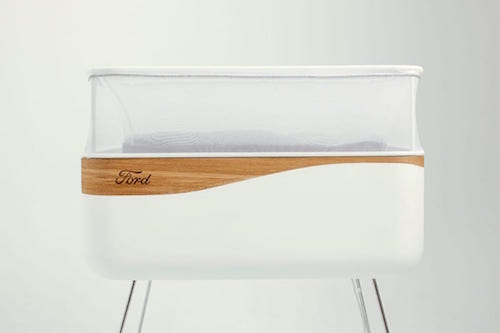Max Motor Dreams




 Monday, January 23, 2017 at 10:28 tagged
Monday, January 23, 2017 at 10:28 tagged  glass,
glass,  installations,
installations,  magnetic,
magnetic,  nature,
nature,  physical
physical Since ancient times, Japanese people have been sensitive to perceive nature as it is, from the sound of the wind through pine trees or the singing of insects in each season. ‘Chijikinkutsu’ was developed with this kind of delicate sense. - Nelo Akamatsu

Nelo Akamatsu is a Japanese multidisciplinary artist. “Chijikinkutsu”, the title of his latest work, is a contraction of the words “Chijiki” and “Suikinkutsu”. The first meaning “geomagnetism” and the latter is the word for a sound installation ornament for traditional Japanese gardens, invented in the 16th century.

In “Chijikinkutsu”, sewing needles are floating on water in glass tumblers which are magnetized, so they are affected by geomagnetism and turn like a compass. When electricity is applied to the coil which is on the outside of the glass tumbler, it creates a temporary magnetic field drawing the needle to the coil. The needle hits the glass creating a very delicate sound.
“A round surface of water in the glass with a floating magnetized needle, reminds me somewhat of a tiny earth with geomagnetism. The smaller the sounds of the glasses will be, the more keenly viewers’ sensibility will be sharpened. In the meantime, they realize that the sounds don’t come from outside of their bodies, but already exist inside of their mind.” - Nelo Akamatsu
I love the minimalist approach of only using a few elements and letting the complexity emerge from having multiple instances. Also, where most sound art is often very “visual” in simply showing the elements that the installation experience exists of (the speakers, the wire, the sensors), this work does not show the regular elements but maybe an even more stripped version of it. A speaker is also a coil being pushed and pulled, it also works with electromagnetism. In that sense, Akamatsu’s work is a very, very rudimentary work of sound art.
 Wednesday, February 4, 2015 at 10:12 tagged
Wednesday, February 4, 2015 at 10:12 tagged  instruments,
instruments,  model,
model,  physical,
physical,  software,
software,  strings,
strings,  virtual
virtual 
Always wanted to play with virtual physics-based objects in a playful way? Andrew Stewart Allen is a programmer, researcher and composer based in San Diego. His recent work is mainly focused on researching and programming physically-informed real-time interactive audio systems. His system Ruratae, which he also wrote his dissertation on, is exactly this. Ruratae is a collaboration of him with visual artist Susanna Var, who created the unique visual style and UI.
For some reason, procedural audio is still not widely used. In software and games, the same sample is often loaded and played, making for quite static behaviour. Procedural audio can make a simple interaction seem like a living, breathing thing, even if it’s just another tidbit of code. George Lucas, Danny Boyle, etcetera, they’ve all been known to say that sound is a very important part of a film. In interactive media, interactive audio has been scarce, which is a shame. The effect is very clear in Ruratae, where the smallest change makes for a totally different sonic beast!

People like Drew are pushing the boundaries and opening up lots of new possibilities with something like Ruratae. Being able to create your own instrument from scratch in a virtual world, according to physical rules, with no DSP knowledge whatsoever is a very interesting new take on audio in games and other software. If you’re a Windows user, you can try out Ruratae yourself!
As Drew is not only a technical guy but also a composer, we’ve invited him for the Five Sound Questions next week!